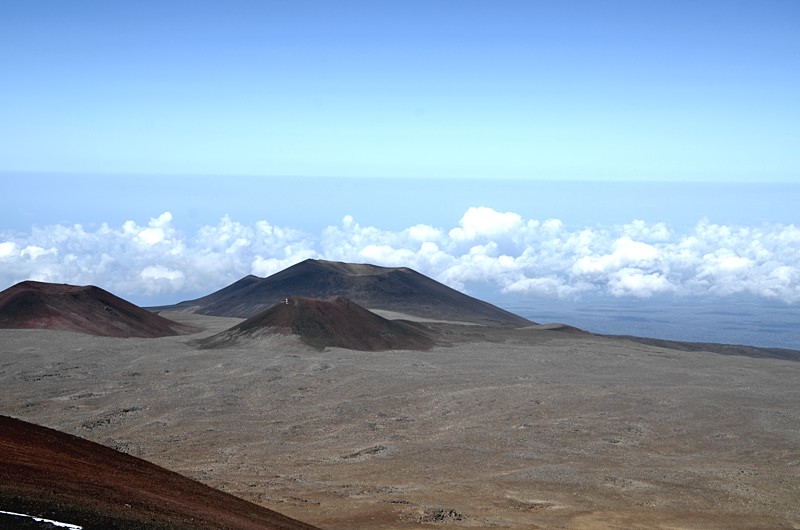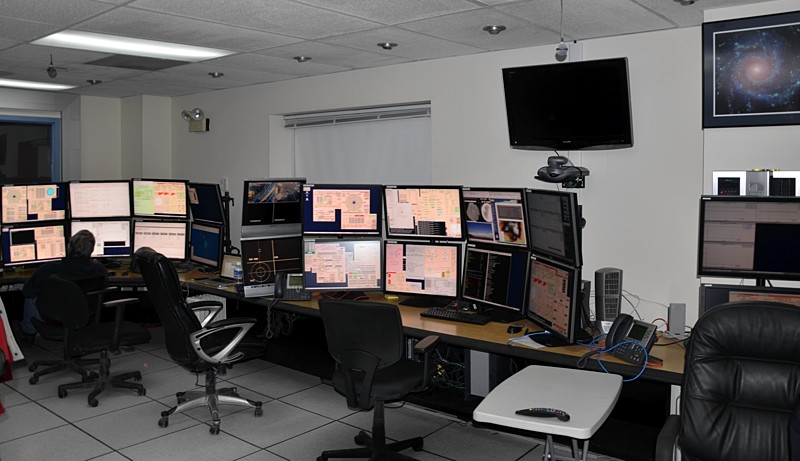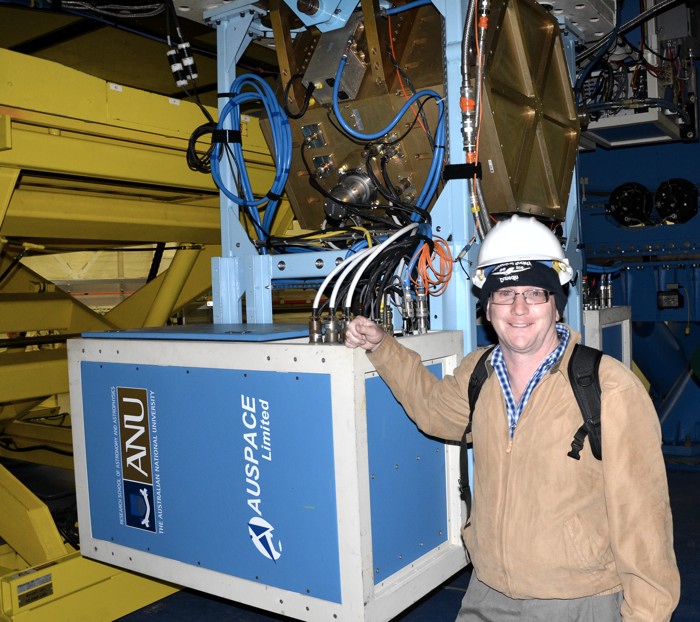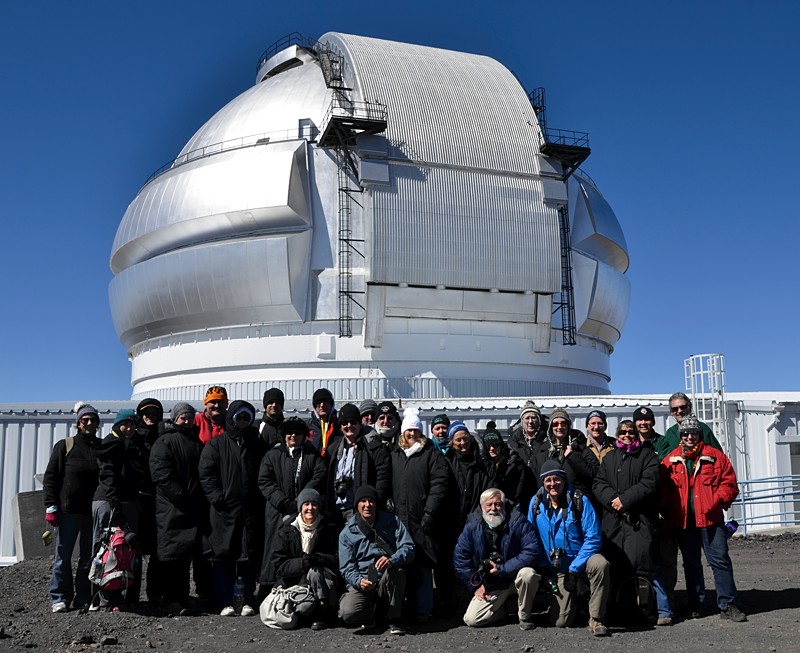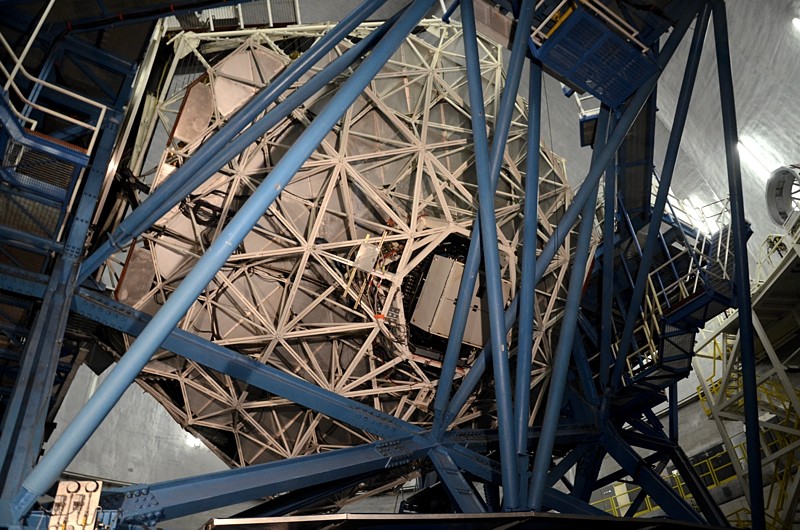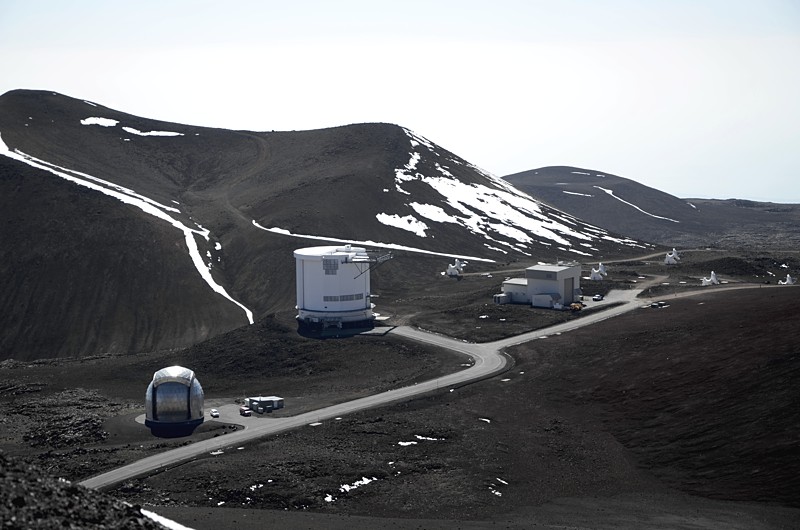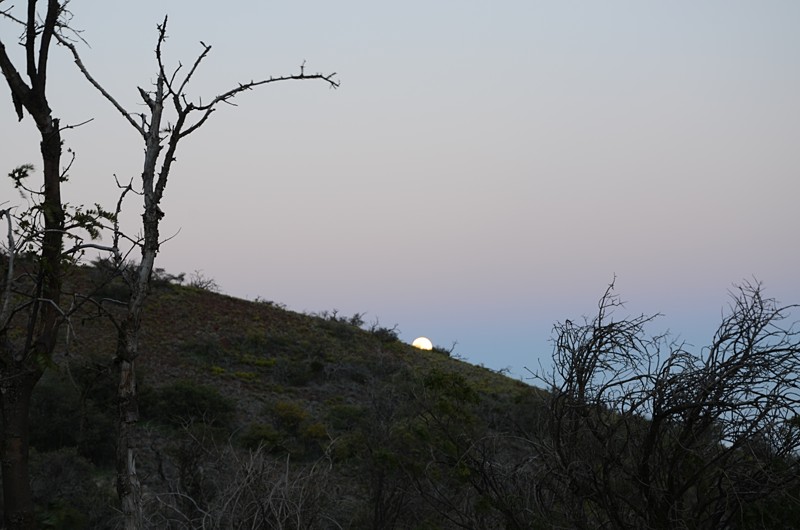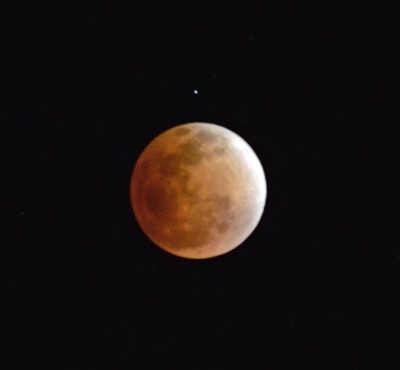When one thinks of Hawaii tropical beaches and palm trees usually come to mind. Although it has plenty of this Hawaii is also home to a collection of some of the largest and most capable telescopes on Earth. Last week I was fortunate to visit some of these telescopes atop the volcano Mauna Kea. This majestic mountain, 4,205m high, dominates the northern half of the island of Hawaii, commonly called the Big Island. I was leading a tour group of Australian teachers keen to learn more about telescopes, astronomy and volcanoes. Mauna Kea has plenty of all three on offer.
Cinder cones on the flank of Mauna Kea.
Cinder cones on the flank of Mauna Kea. Photo: R. Hollow
A highlight of our trip up Mauna Kea was a tour of the Gemini telescope. This is an 8.1m optical and near-infrared telescope. Australia is a partner in Gemini which, as the name implies, actually comprises two telescopes. The second is sited in Chile providing coverage of the southern sky. Given the extreme altitude and the fact that it is accessible driving from sea level in a short space of time altitude sickness is a real concern. We spent an hour acclimatising at the Visitor Information Station at 2,800m before proceeding up the unsealed road to the summit.
The Gemini control room.
The Gemini control room. Photo: R Hollow
We visited the control room and the main floor of the telescope to view the structure and attached instruments. One of these is the Near Infrared Integral Field Spectrometer (NIFS), built by the Australian National University’s Research School of Astronomy and Astrophysics.
The Gemini telescope.
The Gemini telescope. Photo: R. Hollow
Australian Gemini Office astronomer Dr Stuart Ryder in front of the Near-Infrared Integral Field Spectrometer (NIFS) built by the Australian National University's Research School of Astronomy and Astrophysics.
Australian Gemini Office astronomer Dr Stuart Ryder in front of the Near-Infrared Integral Field Spectrometer (NIFS) built by the Australian National University’s Research School of Astronomy and Astrophysics. Photo: R. Hollow
Once outside again we posed for the obligatory group photograph though given the extremely high wind that day the wind chill ensured that most were well rugged up. Traces of snow were still around from the storm a couple of weeks previous.
The teacher tour group in front of the Gemini telescope on Mauna Kea.
The teacher tour group in front of the Gemini telescope on Mauna Kea. Photo: R. Hollow
We then piled back into our 4WD buses for the short drive across to the twin Keck telescopes, adjacent to the 8m-class Subaru telescope. A publicly accessible viewing gallery to Keck I provided us a view of the 36 segments comprising the 10m main mirror.
The Subaru telescope (L), the twin Keck telescopes (C)) and the NASA Infrared Telescope Facility (R) on Mauna Kea.
The Subaru telescope (L), the twin Keck telescopes (C)) and the NASA Infrared Telescope Facility (R) on Mauna Kea. Photo: R. Hollow
The rear of one of the Keck telescopes showing the 1.4m segmented mirrors.
The rear of one of the Keck telescopes showing the 1.4m segmented mirrors. Photo: R. Hollow
A couple of days after our visit both Gemini and Keck released details of their observations confirming the first potential habitable Earth-sized exoplanet, Kepler-186f demonstrating the scientific value of these facilities and their users.
On the drive back down the mountain we drove past the area known as “Submillimeter Alley” due to the very high frequency radio telescopes located there.
The Caltech Submillimeter Observatory (L), James Clerk Maxwell Telescope (C) and the Submillimeter Array (R).
The Caltech Submillimeter Observatory (L), James Clerk Maxwell Telescope (C) and the Submillimeter Array (R). Photo: R. Hollow
Returning to the Visitor Information Station we had dinner whilst waiting for the next highlight, a total lunar eclipse. As the Moon rose and the eclipse began we watched the surface darken then eventually turn a deep red and orange under totality. The newly dark sky allowed us to see the unfamiliar northern constellations and share a truly memorable viewing experience.
Moonrise from Mauna Kea on 14 April 2014.
Moonrise from Mauna Kea on 14 April 2014. Photo: R. Hollow
The eclipsed Moon from Mauna Kea.
The eclipsed Moon from Mauna Kea. Photo: R. Hollow
Thanks to the staff of Gemini Observatory especially Peter, Joy and Simon for hosting our group for the tour.

